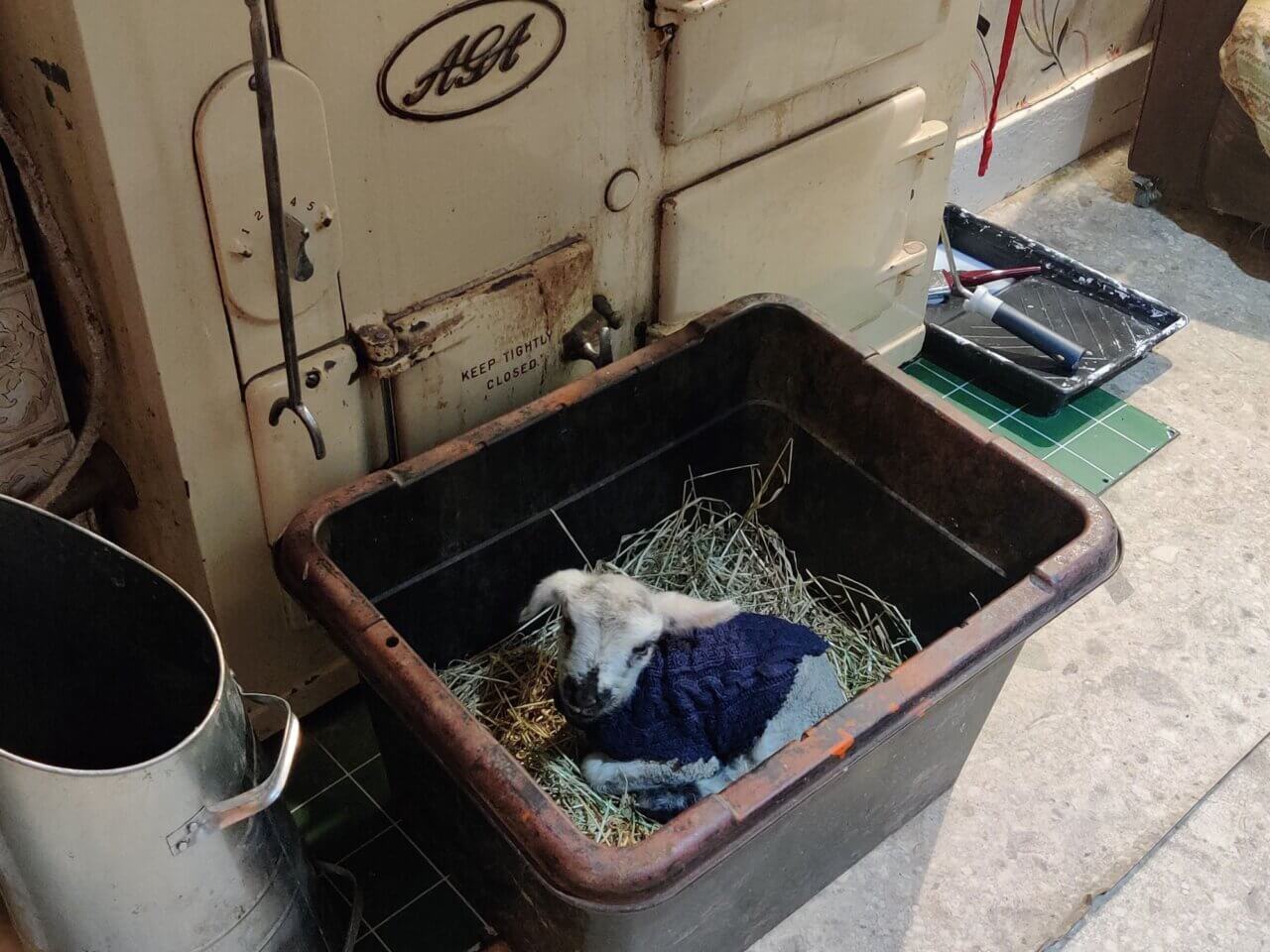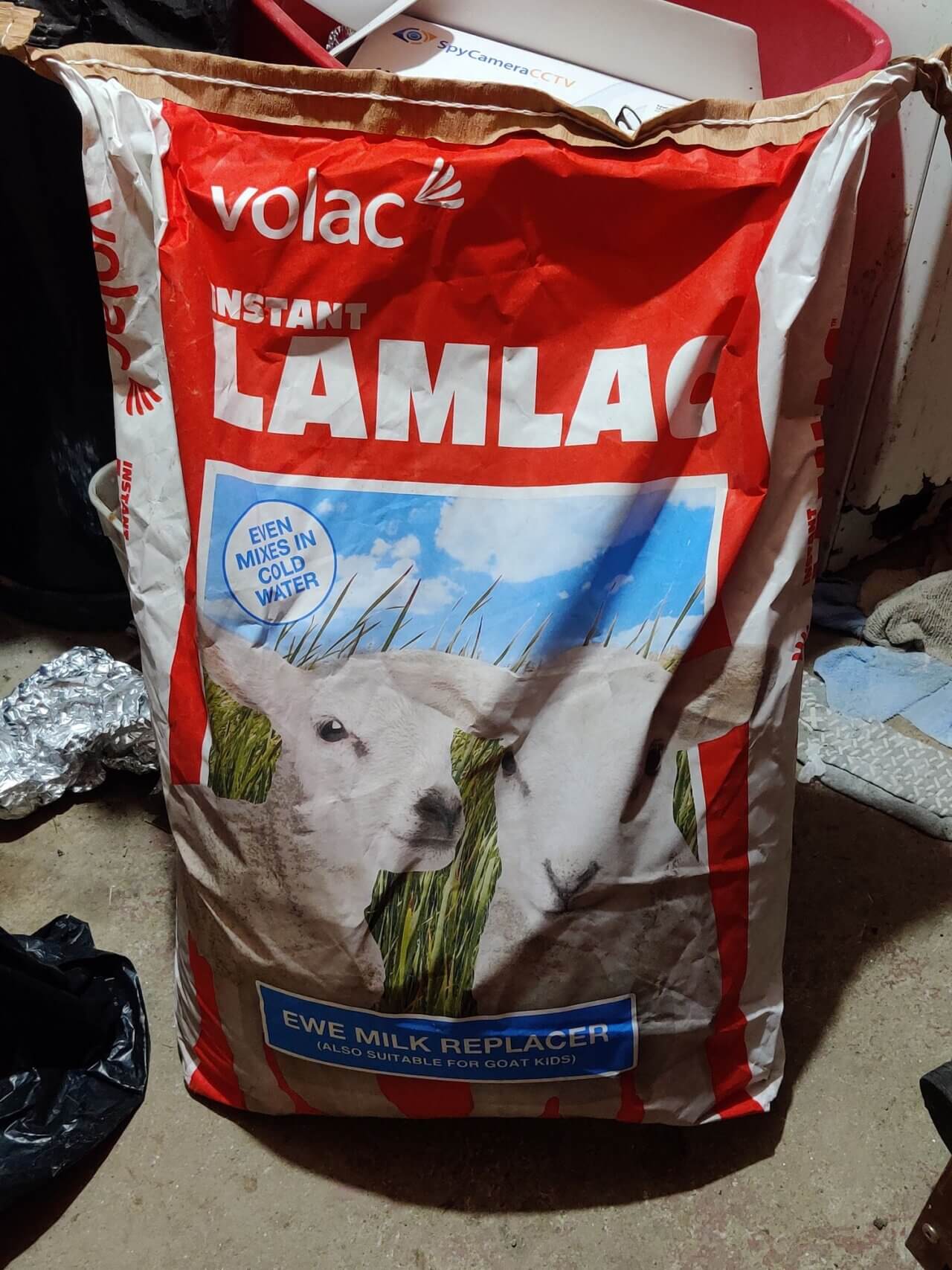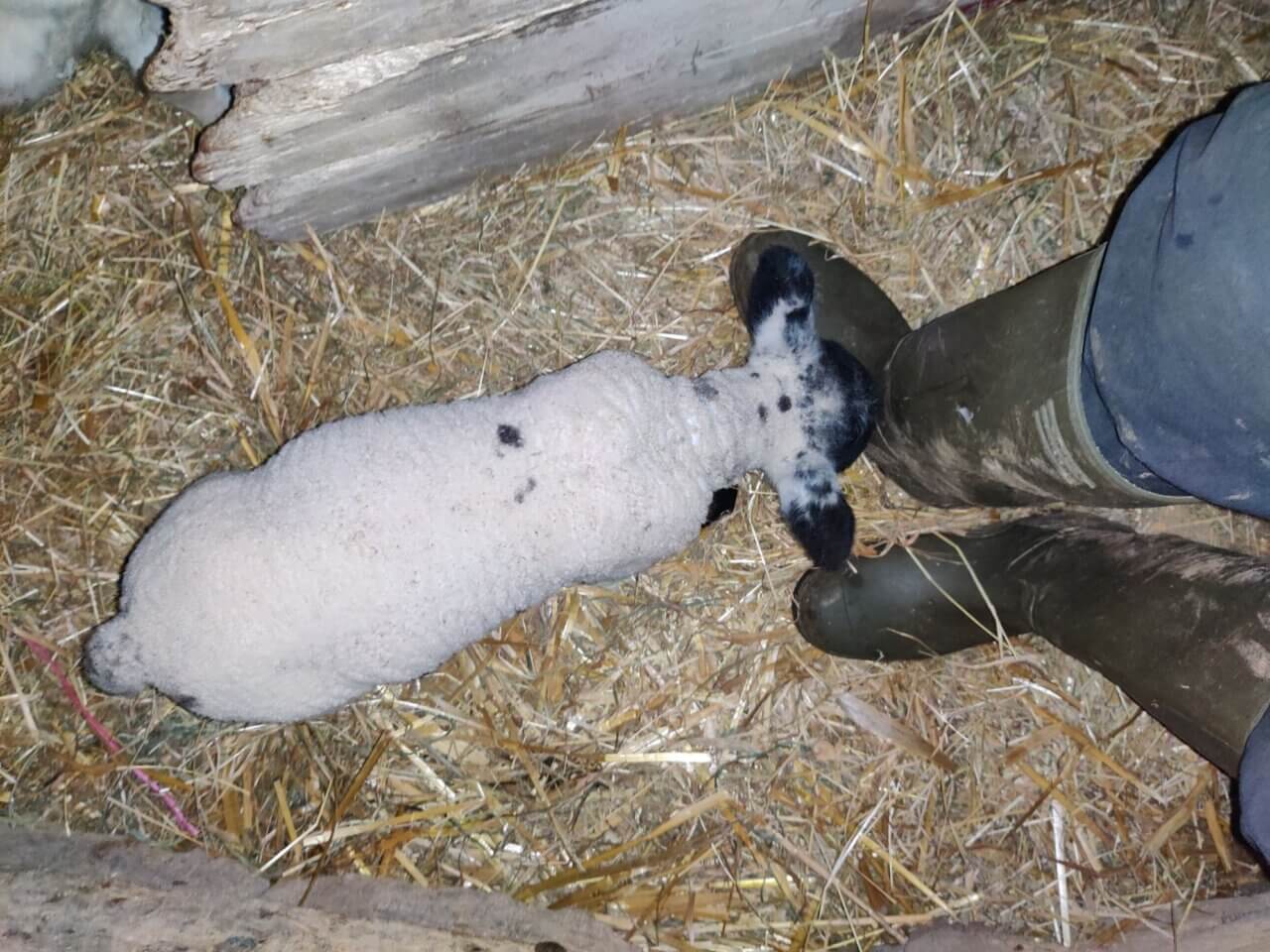Rearing some orphan lambs was something of a New Year’s resolution for me. My ambition was to take on four or five from my uncle’s farm nearby. But with eight in the barn and lambing season far from over, we’ve already established something of a lamb orphanage.
What’s are orphan lambs?
Orphan lambs, also known as a bottle lambs or tame lambs, are lambs that are not being raised by their mother. Orphan lambs are instead reared by by people. There are many reasons why a lamb may be raised as an orphan instead of naturally by a mother, referred to below as a ‘ewe’;
- The ewe has had a multiple birth and doesn’t mother all the lambs, or doesn’t mother the lamb well
- The ewe dies during or after lambing
- The ewe is part of a dairy flock and her milk is required for milking, not for feeding offspring
Orphan lambs are sometimes made available by farmers who don’t have time to raise them themselves. Typically, these lambs have had their first colostrum and are ready to continue bottle feeding as normal. However, as we’re taking on our lambs in the very early stages, there’s more work involved.
Our orphan lambs are coming from a flock that lambs outdoors. This is perfectly normal, however it is trickier to manage orphan lambs than when lambing indoors. Generally, lambs that are rejected or poorly mothered out in the field won’t be spotted as soon as those born indoors.

An orphan lamb being warmed by the Aga. A makeshift lamb jacket also helps her stay warm. If a lamb deteriorates, they can develop hypothermia and will not be able to maintain their own body heat.
Once the lamb reaches us, we pop them in a big box or plastic crate, place them in front of the Aga or the wood burner and feed them as appropriate. When they’re feeling bright and feeding well, they move out to the barn.
How to feed orphan lambs?
The first consideration when bottle feeding a lamb is whether or not they have had sufficient colostrum within the first 24 hours. Colostrum is a nutrient rich milk that the mother produces immediately after the lamb is born. The lamb should have their first colostrum within two hours of birth. Their first few feeds will be colostrum, as the mother’s body naturally transitions to producing regular milk. If an orphan lamb hasn’t had sufficient colostrum, or any at all, we urgently need to find an alternative.
Sourcing colostrum for orphan lambs
Sourcing real colostrum is challenging for several reasons;
- It’s only produced by an animal that has given birth within a matter of hours
- It’s often required by the mother’s own offspring, and there is not extra to spare for other lambs
- As it’s hard to source, colostrum may be taken from other animals at opportune moments and stored for when it is needed later.
Colostrum is most often sourced from an animal that has given birth to still-born offspring or offspring that soon dies after being born. This is an opportune moment to milk the colostrum from the mother and freeze it for future use. These circumstances are not common, so it can be hard to source enough natural colostrum for orphan lambs. Fortunately, both sheep and cow colostrum are suitable for lambs. Whilst a lamb may need a larger quantity of cow colostrum than it would sheep’s, cows yield much more colostrum than a ewe anyway. Frozen colostrum must not be defrosted in a microwave as it ruins a lot of the nutrients. For this reason, storing colostrum in small quantities can speed up defrosting when you are pressed for time.
Given how infrequently natural colostrum can be sourced, synthetic colostrum alternatives can literally be a lifesaver. Typically these are powders that are mixed into warm (not hot) water. Some more expensive powders are genuine bovine colostrum (cow colostrum) that has been processed into powder. Others, including the colostrum powder we’ve used, are entirely synthetic, but they do get the job done.
After colostrum
Unless you’re lucky enough to be milking sheep regularly, replacing real ewe’s milk is a must. We’re feeding our lambs a ewe milk replacer powder; that’s essentially baby formula for lambs. To try and recreate their natural ad-lib feeding, lambs are best fed as little and often as is practical. In well-prepared flocks, lambs can be fed ad-lib with the right equipment. Feeding with bottles takes more time, but considerably less investment. We’re feeding our lambs four times a day, at 7.30am, midday, 5pm and 9pm.

Ewe milk replacer powder. Once all of our lambs are onto a 100% replacer powder ration, this bag will last around 8-10 days.
Powder milk can be a bit of a shock to their digestion and cause scours. Scours (i.e. diarrhea) is especially dangerous for a lamb as they ultimately die of dehydration. To avoid scouring, we start the lambs on 100% whole milk, and gradually transition the ration over to 100% replacer milk, all of which is heated on the stove until warm, not hot, and never in the microwave. If a lamb’s poo starts to look a little ‘scour-y’, (i.e. very yellow and too runny) we pause the transition and feed the current ration for longer. If a lamb does go on to develop scours and refuses food, we stop feeding milk and switch to a water-based solution with electrolytes.
Once a lamb is onto 100% replacer, we can be pretty confident they’ll be a happy, healthy lamb. We also offer a small quantity of grain, turnip greens and bed their pens with clean hay. This gives them plenty of dry feed to toy with and introduce into their own ration gradually. Once a lamb is eating dry feed, we can stop bottle feeding them entirely. This takes several weeks and at the time of writing, none of our lambs are off the bottle yet.

An orphan lamb after last feed. Her stomach is pretty round after feeding but will be flat again by morning.
Things don’t always work out
The toughest part of taking on orphan lambs is when things go wrong. You may receive a lamb too late and more reviving is required. Furthermore, even after reviving a struggling lamb, their poor start may make them susceptible to illness in the next few days. Lamb losses in some UK lowland flocks can be has high as 21%. That’s not just orphans, but all lambs. Furthermore, around half of these losses occur within the first 48 hours, so acting fast is critical.
So far, we’ve taken on 12 lambs. Eight are in the barn now and four have died. One of these was a weak lamb right from the off and was not viable; it had a twin who also died. Two reached us too late and were impossible to revive, one of which died within about 10 minutes of getting to us.
One particularly tough case was a lamb that had moved out to the barn and started to scour after the balance in his ration changed. We got him inside in good time and fed him electrolytes to keep his fluids up. For a couple of days he did not look good, he was very slow and barely took down any fluid. Then on the third evening, he started to brighten up and I was even starting to think about putting him back out in the barn the next day. It was a surprise to wake up the next morning to find him dying and he soon passed away. He also had a twin that died a couple of days before him.
Sometimes it can be upsetting to lose animals like this, and sometimes animals can spring big surprises. I was surprised to see the lamb recover and surprised again to see him die. We’re learning so much all the time and sometimes the easiest part is thinking of things we could have done differently in hindsight.
Whenever I’m feeling negative about how our efforts are going, I find it helpful to remind myself of the eight lambs that are bouncing around in the barn. If it weren’t for our efforts and diligence, all eight would have gone the same way as the other four.
Where next for our orphan lambs?
The number of lambs in the barn are gradually increasing every few days. As they grow and wean off of milk and on to dry food, they’ll need to move out of the barn and into a field. I’ve got my eye on a patch of swede turnips that need grazing off. After this, they’ll move to some permanent pasture.
As we’ve not had sheep on our farm for many years, our fences aren’t quite up to scratch for sheep. I’m not looking forward to rounding up any mischievous escapees in the spring.
Some say bottle raised lambs think they are human, I think this is a bit of an exaggeration. Sheep don’t expect to live in houses, drive cars or get into nightclubs. They do make for a different kind of sheep however. As they’re fed by humans, they associate seeing us with getting a bottle of nice warm milk. Because of this, tame lambs will stroll up and bleat at a person until they get fed.
Whilst I’m looking forward to them growing up and taking care of themselves, I know I’m bound to miss seeing so much of them once they go out to pasture. Read more farm posts on my blog.